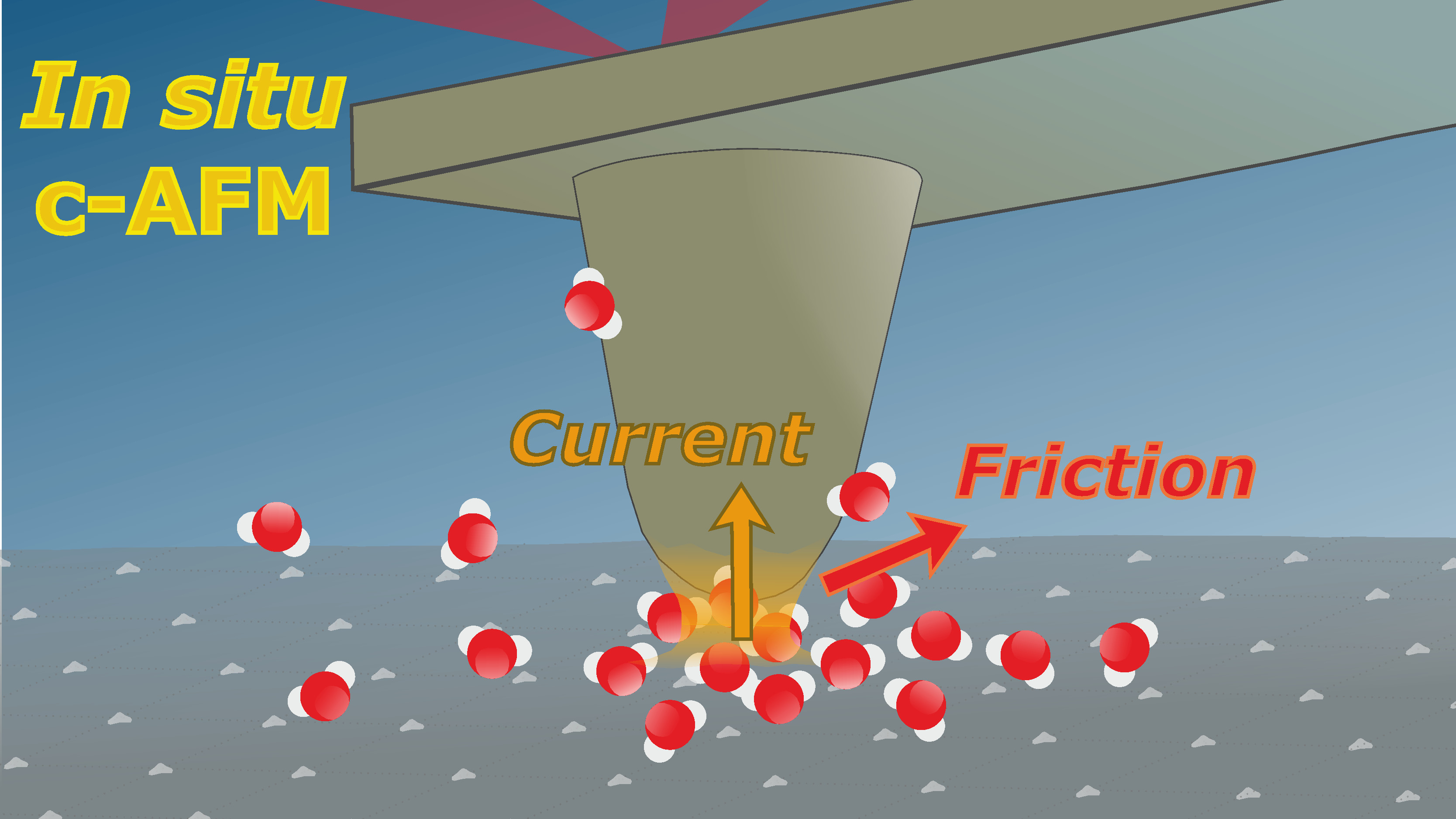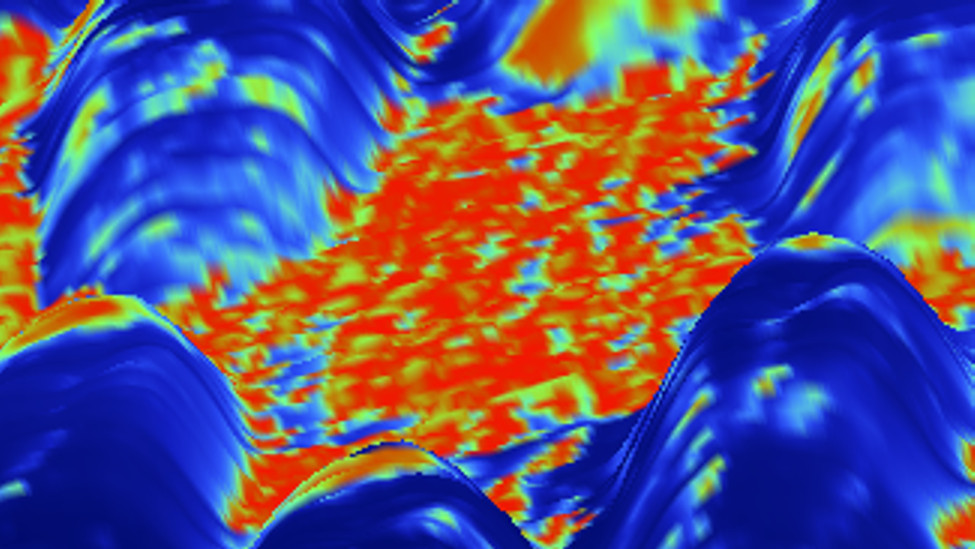| Mar 09, 2023 |
Electrocatalysis under the atomic force microscope
(Nanowerk News) A further development in atomic force microscopy now makes it possible to simultaneously image the height profile of nanometre-fine structures as well as the electric current and the frictional force at solid-liquid interfaces.
|
|
A team from the Helmholtz-Zentrum Berlin (HZB) and the Fritz Haber Institute (FHI) of the Max Planck Society has succeeded in analysing electrocatalytically active materials and gaining insights that will help optimise catalysts (Journal of the American Chemical Society, "Nanoscale electron transfer variations at electrocatalyst-electrolyte interfaces resolved by in situ conductive atomic force microscopy"). The method is also potentially suitable for studying processes on battery electrodes, in photocatalysis or on active biomaterials.
|
 |
| The principle of correlative atomic force microscopy in contact mode: a fine tip at the end of a cantilever scans the surface. This allows force interactions between the tip and the sample surface to be measured, including frictional forces. If a voltage is also applied, the electric current flowing through the contact can also be measured. (Image: HZB)
|
|
To manage the energy transition, it will also be important to rapidly develop cheap and efficient materials that can be used to split water or CO2 by electrocatalysis. In this process, part of the electrical energy is stored in the chemical reaction products.
|
|
The efficiency of such electrocatalysts depends largely on the nature of the electrode-electrolyte interfaces, i.e. the interfaces between the solid electrodes and the typically aqueous electrolyte. However, spatially resolved physical studies of such solid-liquid interfaces are still relatively scarce.
|
More insights with AFM
|
|
Dr Christopher S. Kley and his team have now developed a new approach to correlative atomic force microscopy (AFM). An extremely sharp tip is scanned across the surface and its height profile is recorded. By attaching the tip to the end of a miniaturised cantilever, the force interactions between the tip and the sample surface, including frictional forces, can be measured with high sensitivity.
|
|
In addition, the electrical current flowing through the mechanical contact can be measured, provided a voltage is applied. "This allowed us to simultaneously determine the electrical conductivity, the mechanical-chemical friction and the morphological properties in situ (i.e. under the relevant liquid-phase conditions rather than in vacuum or in air)," emphasises Kley.
|
 |
| The newly developed method was used to scan the surface of a bimetallic catalyst material in an aqueous medium. The figure shows an overlay of the current signal on a three-dimensional representation of the height image. This clearly shows island-like regions. (Image: M. Munz/HZB)
|
Copper-gold electrocatalyst
|
|
Using this method, the scientists now studied a nanostructured and bimetallic copper-gold electrocatalyst, in collaboration with Prof. Beatriz Roldán Cuenya from the Fritz-Haber-Institute (FHI). Among others, such materials are used in the electrocatalytic conversion of CO2 into energy carriers. "We were able to clearly identify islands of copper oxide with higher electrical resistance, but also grain boundaries and low-conductivity regions in the hydration layer where the catalyst surface comes into contact with the aqueous electrolyte," says Dr Martin Munz, first author of the study.
|
|
Such results on catalyst-electrolyte interfaces help to optimise them in a targeted manner. "We can now observe how local electrochemical environments influence charge transfer at the interface," says Kley.
|
Focus on solid-liquid interfaces
|
|
"However, our results are also of general interest to energy research, especially for the study of electrochemical conversion processes, which also play a role in battery systems." Insights into solid-liquid interfaces can also be useful in completely different areas of research, such as understanding corrosion processes, nanosensor systems, and possibly addressing scientific queries in fluidics and environmental sciences, such as dissolution or deposition processes on metal surfaces exposed to water.
|


